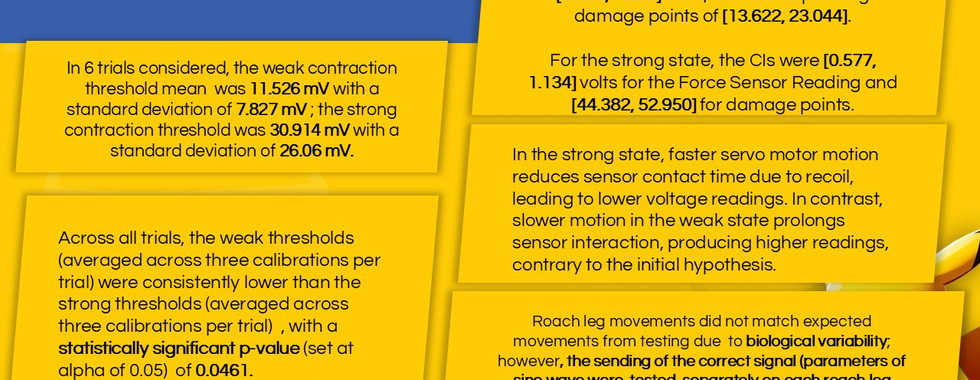Human-Cockroach-Machine Interface (HCMI) – A Biomechatronic Design Challenge
- Harita Trivedi
- Dec 1, 2024
- 1 min read
Updated: Dec 28, 2024
What:
Participated in a cutting-edge design challenge to develop a Human-Cockroach-Machine Interface (HCMI), combining biomechanics, electronics, and biology.
Aimed to integrate human electrophysiological signals (EMG) with real-time control of a biomechatronic system, including a cockroach leg and a servo motor.
How:
Designed and implemented a system incorporating multiple sensor inputs, signal segmentation, and advanced control algorithms to enable precise movements.
Utilized MATLAB for signal processing, including low-pass filtering and identifying contraction states through threshold calibration.
Developed a calibration process averaging three weak and three strong thresholds per user, ensuring individual customization and accuracy.
Built a functional prototype using CAD tools to design mechanical components, integrated with electronic systems and a force sensor for real-time feedback.
Tested signal strength using an oscilloscope and optimized servo motor speeds for distinct signal states.
Results:
Achieved weak contraction thresholds averaging 11.526 mV (SD: 7.827 mV) and strong thresholds averaging 30.914 mV (SD: 26.06 mV) with a statistically significant p-value of 0.0461 (alpha = 0.05).
Verified force sensor readings in the weak state with 95% confidence intervals (CIs) of [0.806, 1.228] volts, translating to damage points of [13.622, 23.044]. In the strong state, CIs were [0.577, 1.134] volts, resulting in damage points of [44.382, 52.950].
Demonstrated servo motor response with faster speeds in the strong state, ensuring clear differentiation between contraction states.
Integrated real-time signals for servo and cockroach leg movements, confirming accurate sine wave outputs despite biological variability.



















